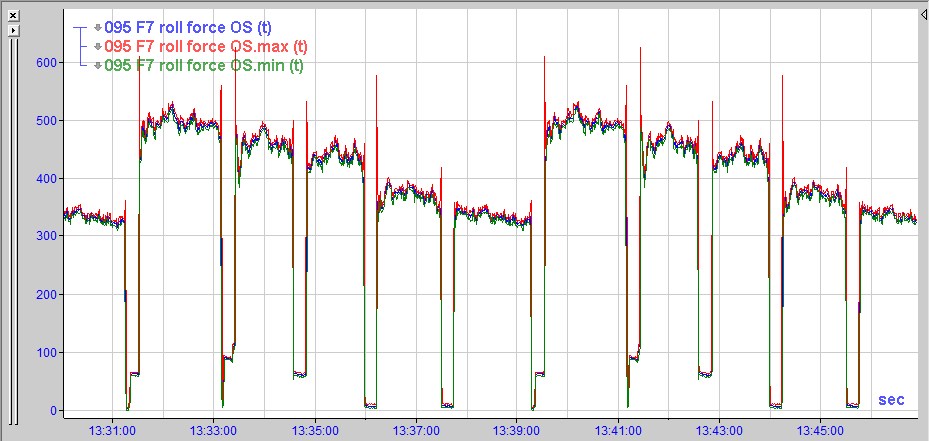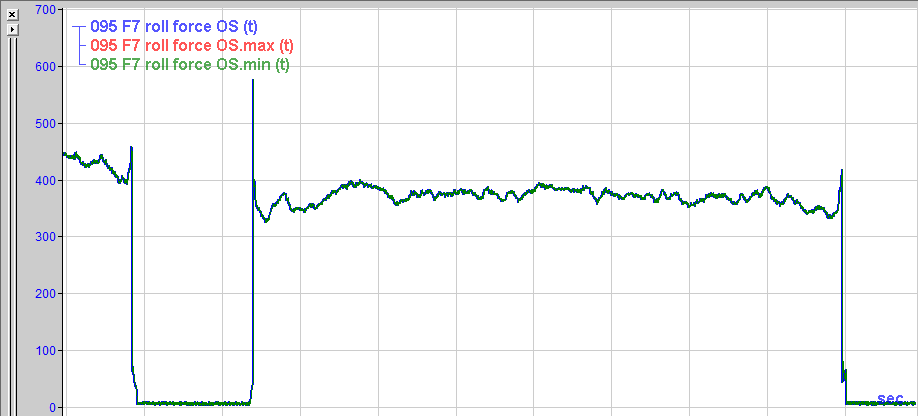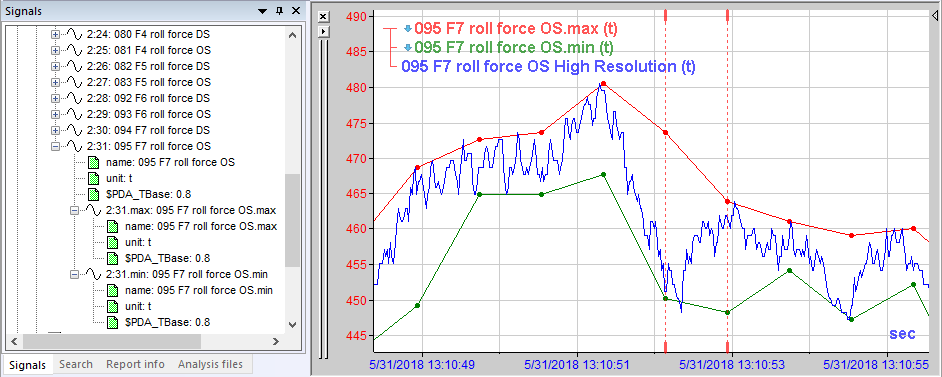For each HD query, the min and max subchannels are automatically loaded for each analog signal if the following options are activated in the ibaAnalyzer default settings under HD Server:
-
Also query aggregated minimum channel
-
Also query aggregated maximum channel
Other documentation |
|
|---|---|
|
Further information on the settings for HD servers can be found in the ibaAnalyzer documentation, part 2 in the HD Server chapter. |
|
In the following image, you can see the measured value and the subsignals for max and min in the signal tree. The graph shows the corresponding curves in red and green. The blue curve shows the high resolution data for comparison.
The calculation of the maximum and minimum values always relates to the determined time basis of the query.
This provides you with information about the maximum and minimum values that occurred in the time base intervals for the aggregation. Measured value outliers are therefore not lost.
Determination of minimum and maximum values
The following figure illustrates how the maximum values are determined, for example.
In this example, the preferred time base for the HD query is 800 ms. The aggregated values for the measured value (not shown here) as well as the maxima and minima are entered in this time grid.
The blue curve in the background shows the measured values in the highest resolution as they would look after a drill-down. The maximum value of the blue curve from each 800 ms interval is drawn on the red curve.
Minimum and maximum in drill-down
If you perform a drill-down in a display with maximum and minimum signals, the curves get closer to each other until they are congruent at the smallest time base offered by HD recording.
Example 1
Curves after zooming into an HD query with a timebase of about 30 s:

Example 2
Curves for the same time range after an initial drill-down.

Example 3
Curves after zooming in and drilling down again (highest resolution); In this example, only the green curve is visible because it is in the foreground and covers the others:


